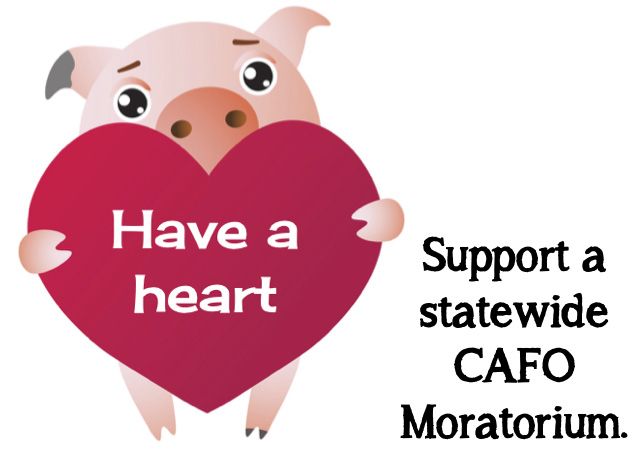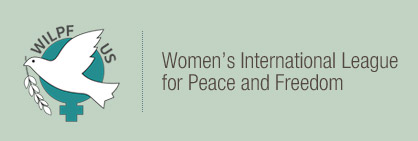Accelerating Change in Iowa and NC: Fighting Factory Farms and Getting the “Scoop on the Poop”!
Published on January, 22 2023
by Jan Cordeman, Lib Hutchby, and Nancy Price
Earth Democracy Committee
February 2023
WILPFers in Iowa and North Carolina are showing us how to “accelerate change” on the local level, working with allies toward a moratorium on factory farms and exposing the environmental racism of CAFOs.
For decades, small diversified farms have sustainably used animal waste for crop fertilizer, but today’s excessively large CAFOs (Concentrated Animal Feeding Operations) that are responsible for housing beef or dairy cattle, hogs, and chicken for meat and eggs, produce massive amounts of waste.
In Iowa, the largest pork producer in the US, Jan Cordeman works with the Iowa Alliance for Responsible Agriculture. A coalition of 25 organizations, including WILPF US and her Des Moines Branch, is working toward a moratorium on factory farms; and the Factory Farming Awareness Coalition is also working to build the movement to end factory farming. You may watch the recent People’s Hearing on Factory Farms in Iowa here.
In North Carolina, Lib Hutchby of the Triangle Branch works with the North Carolina Environmental Justice Network on the air, water, and health problems caused by CAFOs. Jamie Berger in "How Black North Carolinians Pay the Price for the World's Cheap Bacon" explains the environmental racism of the CAFOs that have a stranglehold on the state legislature. Industrial pork production exploded in eastern North Carolina in the late 1980s and early ‘90s, as mega CAFOs that each housed thousands of animals displaced small farms, lured there by pro-business tax incentives, lax environmental regulations, minimal oversight, and with little pushback from community residents.
Ever since then, the Black, Latinx, and Indigenous residents who live near the giant pig farms have been fighting for their rights to clean air, for clean water not poisoned wells, for better health care rather than shortened lifespans and higher rates of physical and mental health problems, and for a life free of the stench of the 10 billion gallons of waste the state’s 8.8 million pigs produce each year. This low lying region with sandy soil and shallow aquifers is vulnerable to flooding and now has the top 10 ranked counties for number of pigs per land area in the entire US.
How CAFOs Foul and Pollute Our Waterways
Here’s the “Scoop on the Poop”! When manure is too frequently applied to large areas of land, nutrients overwhelm the absorptive capacity of the soil, and either run off into surface water or are leached into the groundwater. Groundwater contaminated with pathogens, antibiotics in animal feeds, and chemicals is a serious threat to drinking water, and can move eventually to pollute rivers and streams.
Equally devastating, the clay or concrete storage pits, lagoons, or holding ponds can break or overflow from rainwater, severe storms, and hurricanes and pollute drinking water sources.
This all relates to the aims and goals of World Water Day. Accelerating Change toward achieving Goal 6 – clean water and sanitation – could apply to CAFOs, but only at this time by passing individual state or a national moratorium. Watch the Iowa CAFO Moratorium 2023 Talk here.



